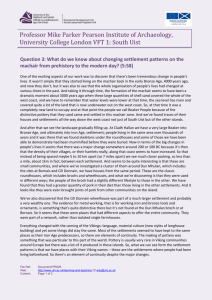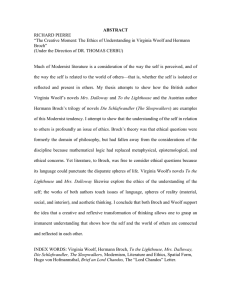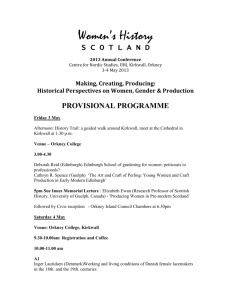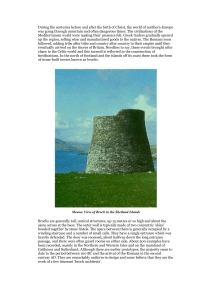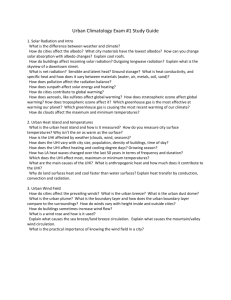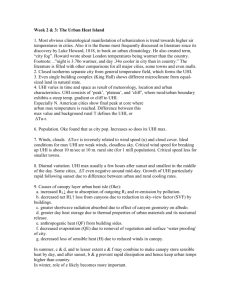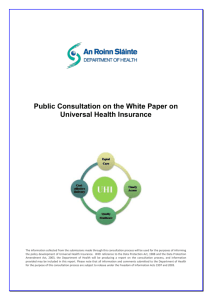Transcript: VFT 2: Orkney - Interview with James Moore, Orkney
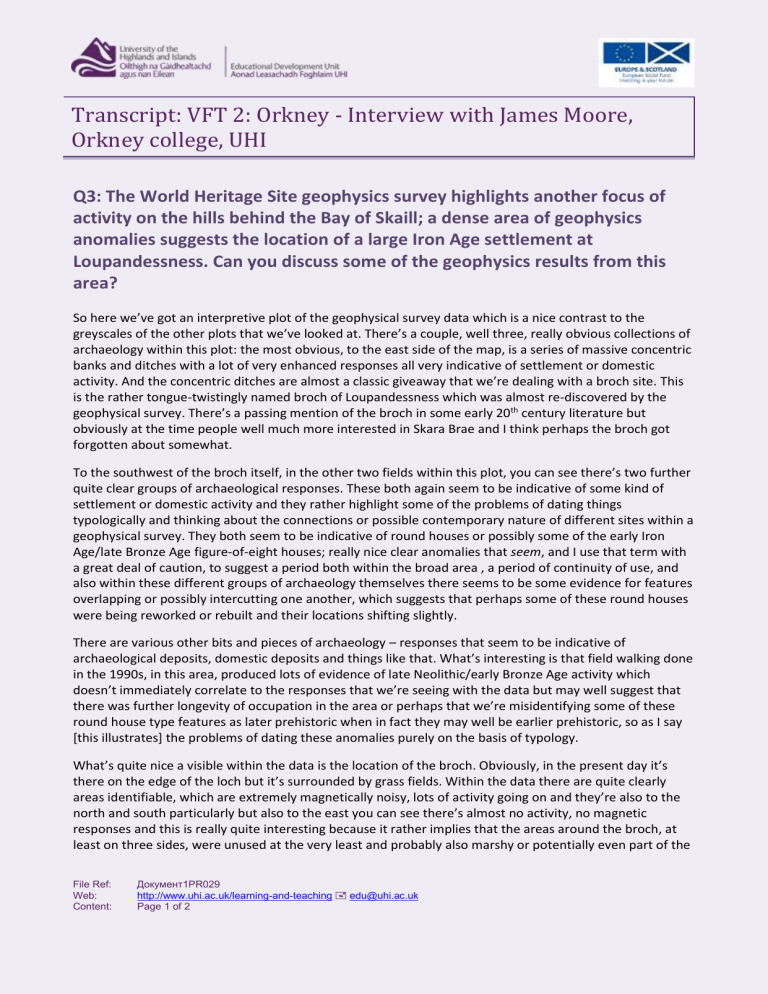
Transcript: VFT 2: Orkney - Interview with James Moore,
Orkney college, UHI
Q3: The World Heritage Site geophysics survey highlights another focus of activity on the hills behind the Bay of Skaill; a dense area of geophysics anomalies suggests the location of a large Iron Age settlement at
Loupandessness. Can you discuss some of the geophysics results from this area?
So here we’ve got an interpretive plot of the geophysical survey data which is a nice contrast to the greyscales of the other plots that we’ve looked at. There’s a couple, well three, really obvious collections of archaeology within this plot: the most obvious, to the east side of the map, is a series of massive concentric banks and ditches with a lot of very enhanced responses all very indicative of settlement or domestic activity. And the concentric ditches are almost a classic giveaway that we’re dealing with a broch site. This is the rather tongue-twistingly named broch of Loupandessness which was almost re-discovered by the geophysical survey. There’s a passing mention of the broch in some early 20 th century literature but obviously at the time people well much more interested in Skara Brae and I think perhaps the broch got forgotten about somewhat.
To the southwest of the broch itself, in the other two fields within this plot, you can see there’s two further quite clear groups of archaeological responses. These both again seem to be indicative of some kind of settlement or domestic activity and they rather highlight some of the problems of dating things typologically and thinking about the connections or possible contemporary nature of different sites within a geophysical survey. They both seem to be indicative of round houses or possibly some of the early Iron
Age/late Bronze Age figure-of-eight houses; really nice clear anomalies that seem, and I use that term with a great deal of caution, to suggest a period both within the broad area , a period of continuity of use, and also within these different groups of archaeology themselves there seems to be some evidence for features overlapping or possibly intercutting one another, which suggests that perhaps some of these round houses were being reworked or rebuilt and their locations shifting slightly.
There are various other bits and pieces of archaeology – responses that seem to be indicative of archaeological deposits, domestic deposits and things like that. What’s interesting is that field walking done in the 1990s, in this area, produced lots of evidence of late Neolithic/early Bronze Age activity which doesn’t immediately correlate to the responses that we’re seeing with the data but may well suggest that there was further longevity of occupation in the area or perhaps that we’re misidentifying some of these round house type features as later prehistoric when in fact they may well be earlier prehistoric, so as I say
[this illustrates] the problems of dating these anomalies purely on the basis of typology.
What’s quite nice a visible within the data is the location of the broch. Obviously, in the present day it’s there on the edge of the loch but it’s surrounded by grass fields. Within the data there are quite clearly areas identifiable, which are extremely magnetically noisy, lots of activity going on and they’re also to the north and south particularly but also to the east you can see there’s almost no activity, no magnetic responses and this is really quite interesting because it rather implies that the areas around the broch, at least on three sides, were unused at the very least and probably also marshy or potentially even part of the
File Ref:
Документ1PR029
Web: http://www.uhi.ac.uk/learning-and-teaching edu@uhi.ac.uk
Content: Page 1 of 2
Transcript: VFT 2: Orkney - Interview with James Moore,
Orkney college, UHI 06/06/13
loch itself. It may well be that the loch silted up over time. And you can see that actually within the gradiometer data there are a series of what seem to be revetments or walls of some sort that are visible as a series of linear anomalies that seem to define the area within which the broch is positioned. So it may well be that you’ve got the broch itself contained within two or three banks and ditches and then further contained or protected by a series of revetments or walls and then further separated from the world by the presence of the water – the loch lapping up against the base of these walls. I don’t particularly put a lot of faith in the defensive interpretations of brochs but there clearly is something very interesting going on here
– that the inhabitants of this site felt the need to so carefully define and delimit their settlement, their area of inhabitation.
The final thing to briefly comment on within the gradiometer data, within the interpretive plot, is a series of various different ploughing trends. Much like both of the other plots that we’ve looked at, the various linear anomalies seem to indicate ploughing, rig and furrow and also, with the much more closely spaced trends, more modern ploughing that appears again to be cutting through and reworking some of the earlier deposits and the earlier soils and these kinds of things.
File Ref: Документ1
Web: http://www.uhi.ac.uk/learning-and-teaching
edu@uhi.ac.uk
Content:: Page 2 of 2

